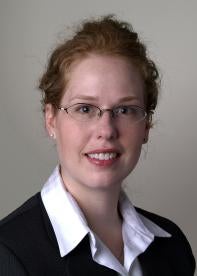The landmark healthcare reform bill that was passed by the U.S. House of Representatives earlier this week and signed by President Obama on March 23, 2010, makes clear the increasingly important role of personalized medicine in the U.S. healthcare system. Section 6301 of the Patient Protection and Affordable Health Care Act contains provisions to create a Patient-Centered Outcomes Research Institute that will be responsible for conducting comparative effectiveness research and ensuring that research designs take into account various subpopulations, for example subgroups of patients with different genetic characteristics that could lead to a differential response to treatments.
Personalized medicine also has some important implications in the intellectual property world. Central to the personalized medicine approach are diagnostic tests that can help medical professionals determine whether or not a particular patient will respond to a specific therapy or even be harmed by it. Such tests often rely on the presence of certain characteristics, for example, biomarkers, variant gene sequences, or alternate forms of a protein, that differ among individuals or groups of people. These differences may affect how a therapeutic drug or biological molecule is processed by the body and the presence of certain biomarkers may be useful in predicting the patient response. If a patient has indicators that suggest she will not respond to a certain type of treatment, she can look for other alternatives without spending time trying a therapy that is not likely to work and without suffering possibly dangerous side effects.
As personalized medicine becomes a reality, companies may look to intellectual property protection -- and more specifically, to patents -- as an important incentive for deciding whether or not to make an investment in the research and development of new technologies for diagnosing disease or predicting patient responses to drugs. However, the legal framework for obtaining patent protection on methods of diagnosis or determining patient responses is currently in up in the air and, depending on the outcome of some key pending cases, may present challenges to patent applicants in this technology area.
In November 2009, the United States Supreme Court heard oral arguments in the case of Bilski v. Kappos. The case is on appeal from the United States Court of Appeals for the Federal Circuit, which issued an en banc opinion affirming the decision of the Board of Patent Appeals and Interferences that claims to a method of managing investment risk are not patentable subject matter under 35 U.S.C. § 101.
The Federal Circuit determined that the test for patentable subject matter is the "machine or transformation" test, which requires that a process is either tied to a specific machine or apparatus, or transforms an article of matter into a different state or thing. Also, the test requires that the machine or transformation be more than an "insignificant extra-solution activity" and impose "meaningful limits" on the claim's scope, and that the transformation be "central to the purpose of the claimed process." The question before the Supreme Court is whether the Federal Circuit's "machine or transformation" test is too narrow for determining patentable subject matter.
Although the technology at issue in Bilski relates to a "business method," the Court's decision, which is expected this summer, could have important implications for medical diagnostics and methods related to personalized medicine. For example, certain methods that involve diagnosis of a disease or observation of the effects of a particular drug may not be directly tied to a particular machine or apparatus.
The Federal Circuit has provided some level of comfort that diagnostic method claims stand as patentable subject matter under 35 U.S.C. § 101, using the "machine-or-transformation" test. In its September 2009 decision in Prometheus Laboratories Inc., v. Mayo Collaborative Services, 581 F.3d 1336 (Fed. Cir. 2009), the Federal Circuit held that claims to a method of optimizing therapeutic efficacy of a treatment were sufficient to pass its "machine-or-transformation" test because the claims require administering a drug, 6-thioguanine. According to the court, a transformation occurs in the human body upon administration of the drug, and this transformation is central to the invention's specified purpose of treating the human body. Also, they held that the step of "determining the level of 6-thioguanine" is transformative because the body fluid sample from which the measurement is taken must undergo some form of manipulation.
Nevertheless, if the Supreme Court's opinion in Bilski delivers a new test for determining patentability of process claims, the comfort provided by the Federal Circuit's decision in Prometheus with respect to medical diagnostic claims could disappear. Furthermore, Prometheus is currently on petition for writ of certiorari in the United States Supreme Court. A whole new test for determining patentable subject matter could emerge, which requires that medical diagnostic claims be drafted in a new way. These will be important cases to watch as the new healthcare legislation takes shape and makes personalized medicine and diagnostics a focus of our new healthcare regime.




 />i
/>i

